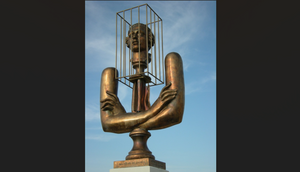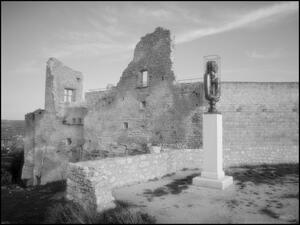Our neighbor, the "Marquis de Sade"
Forty miles to the west of Cadarache, near Apt, the village of Lacoste sits perched on a hill facing the Luberon to the south and the mountain range of the Vaucluse to the north. Silhouetted against the setting sun, the jagged ruins of a monumental castle tower over the village: this place was once the home of Donatien Alphonse Francois, better known as the Marquis de Sade (1740-1814).
Yes - the very Sade from whom we have derived the words "sadism", "sadist" and "sadistic". Scholars will tell you that this is quite unfair: Sade wasn't a sadist - it's just that he had a lot of imagination. What led him to spend most of his life in prison or in lunatic asylums, was not so much the wild parties he organized in Paris and, later in life, in his chateau in the Luberon, but his unwavering stand for freedom, both political and personal.
Lacoste's 500 or so residents have always harboured mixed feelings about their former lord. During the French Revolution, they looted and burned his castle and today, except for a "Cafe" and a "Moulin de Sade", nothing reminds the visitor of the village's most illustrious figure - no Boulevard de Sade, Rue Justine or Place Juliette are to be found in Lacoste.
But the "Divine marquis" - this is how poets in the 1920's surrealist movement referred to him - is still haunting the place. His sad and eerie presence can be felt on the Castle's esplanade where his caged bust stands lonely guard over the ruined walls.
It took a "stranger", a Parisian, to try to salvage what was left of Sade's memory: In 2001, French fashion designer Pierre Cardin acquired the castle, along with several houses in the village, and has been busy restoring them ever since. Each July, Cardin organizes a music and theatre festival in the nearby quarries. In the summer at least, Donatien Alphonse Francois is not alone anymore.



